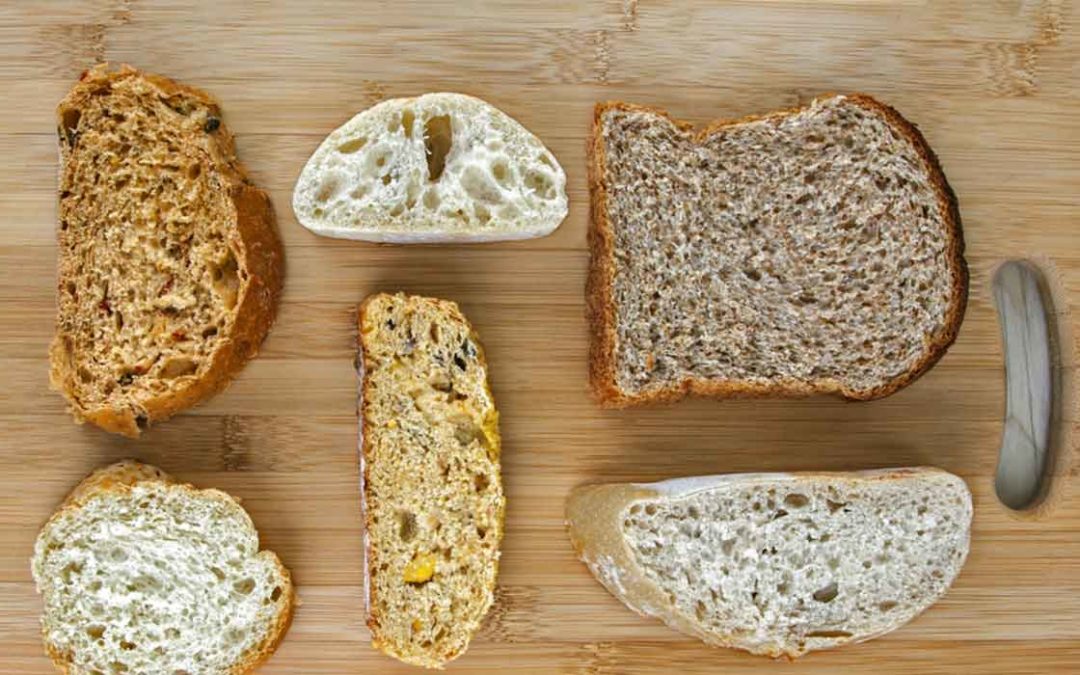nutrition
Nutrition Difference Between White And Brown Bread
By Forever Expert

2020-05-18
Bread is one of the most commonly eaten foods for breakfast around the globe. People of all ages love eating bread toasts, sandwiches, and bread omelets, etc. Also, there are many different varieties of bread available like whole grain, brown, white, and garlic bread, etc. Out of these, the most usually eaten ones are the brown and the white one. However, there have been a lot of debates over the better option to eat between white and brown bread. So let’s check out, which of these two is healthier & nutritious.
White & Brown Bread

White bread is prepared using only the carbs-filled endosperm portion of the wheat grain, giving it a white color. The other two nutritious components of wheat grain i.e. the fibrous bran and the nutritious germ, are removed while manufacturing. Thus, the white bread is produced by refining the wheat flour and processing it extremely. That’s how all the nutritional elements are removed from it and only the starchy portion is left. Many bread manufacturing companies around the world even add minerals & other nutritious elements to white bread.
On the other hand, brown bread is manufactured using all the three nutritious parts of the wheat grain. Thus, it includes the carbs-filled endosperm, the fibrous bran, and the nutritious germ. Consequently, brown rice is richer in health-friendly nutrients like vitamins, minerals, protein, and fiber, etc. Moreover, the wheat flour used to manufacture it is neither bleached nor processed. Therefore, brown bread is considered to be a more nutritious and healthier option across the world.
Nutrition Per Bread Piece
Let’s check out the amount of nutrition per bread piece for both white and brown bread. The below-mentioned values are for one 25g slice.
| White Bread Piece |
Brown Bread Piece |
| Calories – 65
Protein – 2.3g
Fiber – 0.8g
Total Fat – 0.8g
Saturated Fat – 0.25g
Polyunsaturated Fat – 0.45g
Unsaturated Fat – 0.15g
Total Carbs – 12.5g
Sodium – 0.12g
Potassium – 0.03g |
Calories – 75
Protein – 2.8g
Fiber – 2.5g
Total Fat – 0.8g
Saturated Fat – 0.2g
Polyunsaturated Fat – 0.3g
Unsaturated Fat – 0.2g
Total Carbs – 16g
Sodium – 0.13g
Potassium – 0.06g
|
Advantages Of Eating Bread

Both white and brown bread is a go-to food for people around the world. Let’s check out some of the advantages of eating bread.
- Stronger Bones & Teeth – Bread is a great source of calcium and eating 4-5 slices counts for almost thirty percent of daily calcium requirements. Thus, the calcium further helps in keeping your bones and teeth stronger.
- Weight Loss – Brown bread is loaded with dietary fiber, which increases the feeling of fullness in the stomach. Thus, you end up eating less and lose weight eventually. Also, fiber helps in boosting digestion, while also regulating cholesterol and blood sugar levels. However, if you have a question that can we eat white bread during weight loss, the answer is no.
- Muscle Development – Due to the presence of proteins, it also helps in building stronger muscles. Also, the proteins are very helpful in repairing and regenerating body muscle tissues.
- Immunity – Various essential nutrients like iron, vitamin B, and folic acid are found in bread. All these elements help in boosting the body’s immune system greatly. Furthermore, they also help in keeping the eyes, skin, and nails healthier.
- Energy – Bread is a good source of energy, as they have all the essential nutrients along with little calories and fats. Thus, it’s always a good option to stay energetic while managing your weight.
Disadvantages Of Eating White Bread

While brown bread may have a few disadvantages, people always want to know the disadvantages of eating white bread more. Thus, we have researched and prepared a list of health drawbacks of the white one.
- Less Nutrition – As compared to brown bread, white bread is processed to remove the fibrous bran and the nutritious germ portion. Thus, the nutritional value of white bread is very low. Thus, it might not provide as many health benefits to our body as the brown one.
- High Blood Sugar – Due to the low amounts of dietary fiber and proteins, white bread is quickly absorbed and digested by the body. This further causes a sudden surge in the blood sugar levels of the body.
- Weight Gain – White bread is rich in refined carbs, which cause a sudden rush of sugar into the bloodstreams. Due to the excess of sugar, its absorption is not completely possible by the body. Thus, the sugar might get stored in the body as excess fat. Also, the sugar might increase your cravings and you end up eating more food throughout the day. Thus, the amount of caloric intake increases and so does your weight.
- Mood Swings – The sudden increase and decrease in the blood sugar levels are also medically proven to cause mood swings. White bread is known to affect blood sugar levels and hormonal levels. Thus, it can also lead to mood swings, stress, depression, and various other psychological issues.
- Increased Chances Of Type-2 Diabetes – When the blood sugar levels rise, our body automatically releases insulin to push the sugar into the cells. Thus, if the blood sugar levels keep surging and falling, our cells might become unresponsive to insulin. Eventually, the chances of getting affected by type-2 diabetes increase.
Whole Wheat Bread Vs White Bread For Muscle Building
According to several medical studies, whole wheat bread is known to possess a great number of muscle-building nutrients. However, the white bread is manufactured by removing the fiber-filled bran and the nutrition-rich germ portion. Thus, the white one is much less nutritious than the whole wheat one. Muscle building nutrients found in whole wheat bread include vitamin B, protein, dietary fiber, iron, and calcium, etc.
However, if you’re looking for the best bread for your bodybuilding diet, then you must go for sprouted whole grain bread. This is because sprouted whole-grain bread is medically proven to be even more nutritious and helpful for bodybuilding.
The Takeaway!
So this was everything you need to about the nutrition difference between white and brown bread. Evidently, brown bread is much more nutritious than the white one. However, there are many different varieties of bread with even more nutrition. Thus, it’s highly recommended to contact a licensed nutritionist to know the best option for you.
If you have any questions or suggestions, do write below in the comments section or email us through the contact page.






